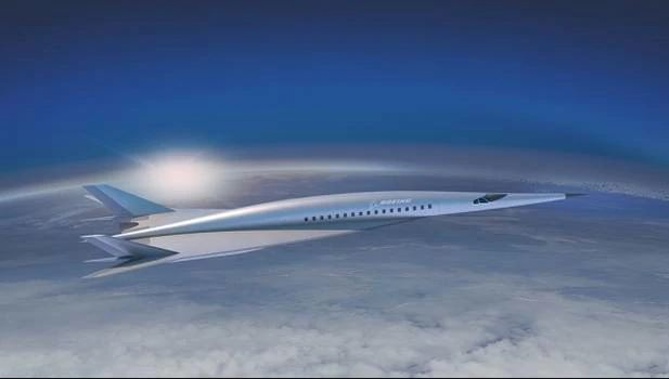
Flights to Europe in under five hours sounds like a fantasy. In most cases you'd spend that long in airports between flights. Yet it could be realised within our lifetime
Aircraft manufacturers Boeing have been looking for ways to use new hypersonic technologies in passenger aircraft.
Boeing has unveiled plans for a new kind of jet which could shrink journey times travelling at Mach 5. Aviation Week reported on the designs at the American Institute of Aeronautics and Astronautics, with a potential entry into commercial service from 2030.
So far this speed has only been reached by missiles and in military appliances, but this would be the first time a manned aircraft had reached such speeds.
With a cruising speed of 5400kmh, this is three times faster than Concorde.
According to NASSA it would be even faster than the quickest military manned vehicle, the Lockheed's SR-71 which "achieved slightly more than Mach 3.2."
Both these supersonic planes are relics of the Cold War - with Lockheed's spyplane retired from service in 2000 and Concorde in 2003 - so Boeing's new design represents a massive leap forwards.
However, Boeing chief scientist for hypersonics Kevin Bowcutt was unperturbed by the challenge. He was eager to point out the value of the aircraft for commercial use.
"We could have an [operational military] hypersonic aircraft, such as an ISR, flying in 10 years," he told Aviation Week, "But there's a lot that goes into a commercial airplane, including the market, regulatory and environmental requirements, so it will happen when there is a convergence of those things."
Current concept designs are aimed at passenger numbers larger than a long-range business jet, but smaller than Boeing's current 737 model.
It would have huge implications for air travel. Shrinking distances across the Pacific to just over three hours or two and a half for trans-Atlantic flights, airlines would be able to same day return flights. This would free up a lot of aircraft for carriers and flight planners.
This new breed of hypersonic aircraft will shrink flight times to a fraction of what they were. Though, in the meantime, passengers will have to do a whole lot of waiting.
The current designs are on track for test demonstrations by the mid-2020s.
Take your Radio, Podcasts and Music with you









